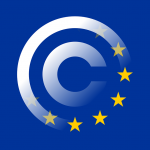Today, just over two weeks from the launch of the Open Pharma position statement on open access, we reflect on how the statement came about, the benefits it offers to different types of stakeholders and the success it has had so far.
Two pharma companies, Shire (now part of Takeda) and Ipsen, have introduced open access mandates, and other companies are interested in following suit. So why have more companies not implemented similar policies? One reason is that the Good Publication Practice guidelines state that journal choice ultimately lies with the author and not with the pharma company. With prestigious journals such as the New England Journal of Medicine not offering immediate open access for pharma-funded research, some pharma companies feel that they would be unable to adhere to an open access mandate. At a roundtable meeting in January 2019, publishers stated that they were unclear on which options pharma would like publishers to offer. In a bid to address this gap, Open Pharma released a position statement on open access, which was launched during International Open Access Week, that calls for publishers to allow authors publishing pharma-funded research the same rights as authors publishing research supported by other sources. Research should be published so that it is made free to read from the date of publication with the long-term goal of it being free to read – and reuse. Tim Koder (Communications Director, Oxford PharmaGenesis) suggested that the statement could be used by publishers “to build new business models that deliver value to everybody”.
Since the launch of the position statement at the MedComms Networking Brunch Meeting on 21 October 2019, we have collected endorsements from pharma, academics, publishers, patients, patient groups and medical communication agencies from eight countries across four continents. To date, 60 individuals and 16 organizations, including publishers, F1000Research, Wiley and ecancer, have endorsed it. Rebecca Lawrence (Managing Director, F1000Research) stated that “a vital element of open access is ‘knowledge mobilization’ – bringing as many relevant stakeholders to engage with published research as possible to maximize its reuse and impact. Open access offers a way to maximize contact with multiple audiences, spark new ideas and understanding, and ensure new interventions and treatments can reach those that need them as soon as possible.” Meanwhile, on Twitter, Taylor & Francis stated that they “welcome further discussion around making research more accessible”. The launch of the position statement also attracted the attention of the mainstream media; specifically, an article published in The Telegraph highlighted the importance of open access to clinicians in developing countries. Ronald Munatsi (Executive Director, Zimbabwe Evidence Informed Policy Network and an endorser of the position statement), commented that “one of the persistent challenges facing various stakeholders in the health sector in Zimbabwe and other low- to middle-income countries is physical and cognitive access to relevant credible evidence to use in identifying research priorities, doing the research, develop policy and in making programme interventions to ensure universal health coverage,” posing a “serious threat for the health sector.”
In an age in which social media contains the most accessible (but not necessarily accurate) information, patient advocate Alan Thomas (Ataxia and Me) comments that the position statement is an “important step in enabling patient groups and charities to share relevant information with the community and build an informed society”.
If you agree with our position statement on open access, you can read and endorse it here, and download it from our Figshare page. Thank you to everyone who has provided feedback, endorsed it and shared it so far!






